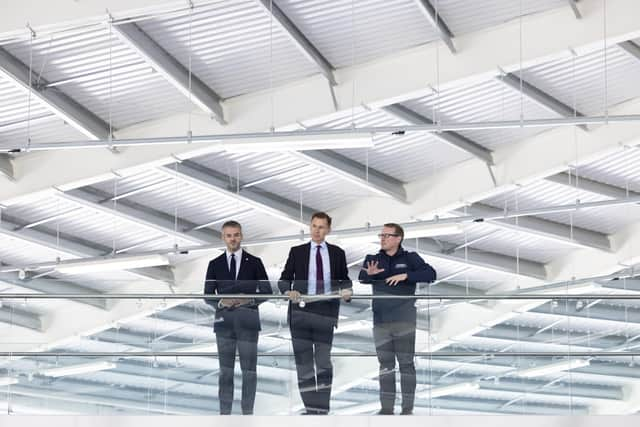Yorkshire leads the way for UK's transforming steel industry
Steelmaking has always held evocative connotations. It’s not surprising when one considers for more than a second the process involved. Digging materials from the earth, and putting them under such immense conditions that they become a new, superior material. It’s an entirely primal-feeling process.
The early days of industry saw manufacturing tied to locations with rivers to turn wheels. Eventually raw materials and transport became deciding factors in locations as the industrial revolution - pardon the phrase - picked up steam.
Advertisement
Hide AdAdvertisement
Hide AdSouth Yorkshire, through coincidence of geography and geology, became the perfect place for industry.


Collective identities grew in South Yorkshire around coal mining and steelmaking. People felt connected to the geography of the places they lived through work and the raw materials in the earth which provided it.
Despite the apparent decline of these industries, it’s the ties to the earth which mean those identities continue to survive long since the closure of the pits and the big steel mills.
The Industrial Revolution conjures images of men in top hats and primitive steam engines, but the era was one of cutting edge technology, no less so than in Sheffield, where advances in manufacturing techniques were famously pioneered.
Advertisement
Hide AdAdvertisement
Hide AdWhile traditional steelmaking faces the chopping block in Scunthorpe and Port Talbot, the steel and metallurgic industries in Sheffield have quietly continued to innovate and evolve, with a diverse range of businesses along the Don Valley where the heavy polluting stacks of the past once were.
This ability for industry to transform and evolve in South Yorkshire is nowhere more apparent than at Sheffield’s Advanced Manufacturing Park.
Now a world-leading location for research and high-tech manufacturing, AMP attracts the biggest names in aerospace, energy and other industries.
The sleek and modern appearance seems to be a million miles away from its history, of course having been built on the site of the old Orgreave mine. The scene itself was pivotal in industrial relations owing to its role as the scene of 1984’s infamous “battle” during the miners’ strike.
Advertisement
Hide AdAdvertisement
Hide AdThere must be something more than raw materials in the earth because this plot of land continues to attract industry. Last month, Italian steelmakers Danieli announced AMP would be the location of their new UK headquarters, providing offices and a distribution centre for their operations.
Other parts of the country beholden to traditional manufacturing would do well to take heed of what’s been happening in this corner of Yorkshire for the last 200 years.
The site in Sheffield was named as the first of 12 advanced manufacturing Investment Zones by the Government in the summer, with a visit by the Chancellor Jeremy Hunt cementing its status.
The Treasury said the zone will help leverage more than £1.2bn of private funding and help support more than 8,000 jobs by 2030.
Mr Hunt said: “Our first Investment Zone is a shining example of how we will drive growth across the country.”
Comment Guidelines
National World encourages reader discussion on our stories. User feedback, insights and back-and-forth exchanges add a rich layer of context to reporting. Please review our Community Guidelines before commenting.
